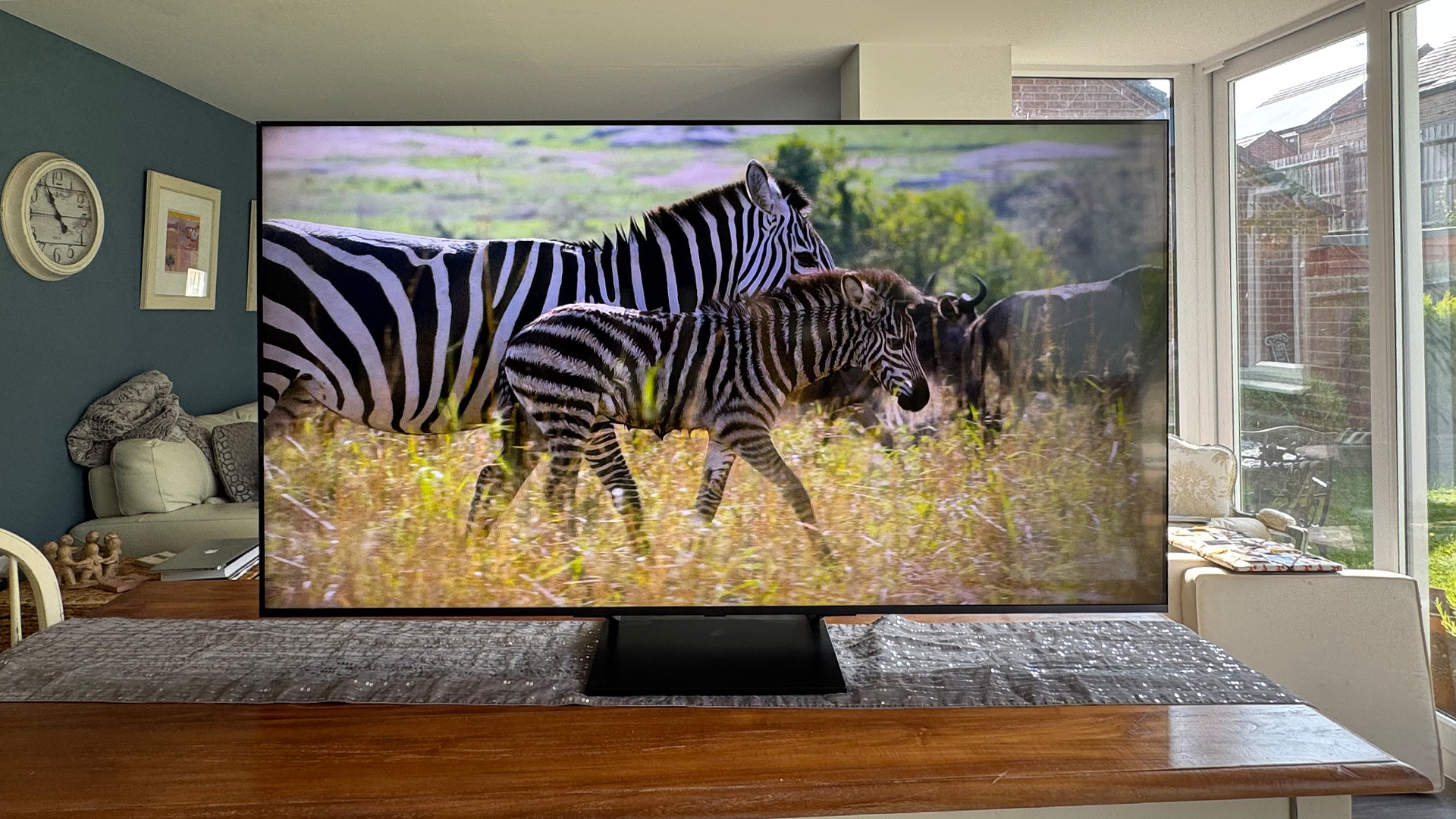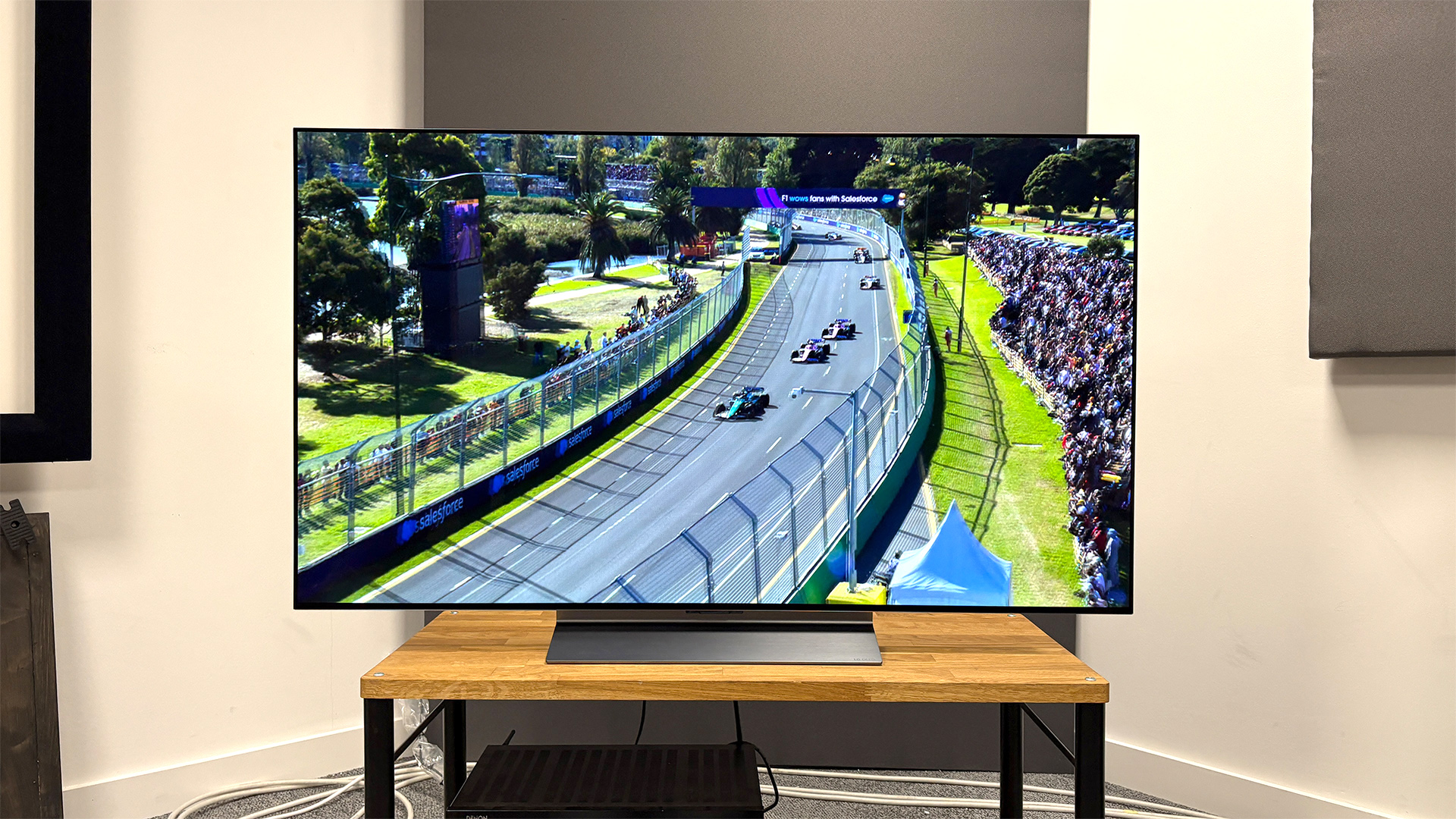What Hi-Fi? Verdict
Massively improved light controls make the bright, colourful and punchy 65QNED93 easily the best LCD TV LG has ever made
Pros
- +
Often outstanding picture quality
- +
Excellent gaming support
- +
Good connectivity
Cons
- -
Sound distorts and lacks bass
- -
No HDR10+ support
Why you can trust What Hi-Fi?
While we don’t want to dwell on the past with this review, understanding why the 65QNED93 is not just LG’s best LCD TV ever, but a great TV by any LCD TV standards, does require at least a brief history lesson.
For starters, while LG has traditionally used an LCD panel technology known as IPS for its big-screen TVs, the 65QNED93 joins last year’s 65QNED91 in using the alternative VA type of panel technology.
This matters because while IPS technology can deliver wider viewing angles than regular VA technology, it struggles more than VA technology to control how much light each LED lets through, meaning it usually comes up short with both contrast and backlight uniformity – two of most home entertainment fans’ favourite things.
While the 65QNED91 definitely delivered a step in the right direction, though, it still didn’t quite have enough control over its new VA panel to keep up with the LCD leaders.
Cue the 65QNED93 (or QNED92 in the US), which stays the VA course but this time unlocks the screen’s capabilities with a light control system so much better than that of its predecessor that it’s hard to believe it’s the result of only a single year of improvement.
Just don’t expect the 65QNED93’s successes, though, to be repeated across all screen sizes, since LG continues to use IPS panels for the other sizes in the range.
Price
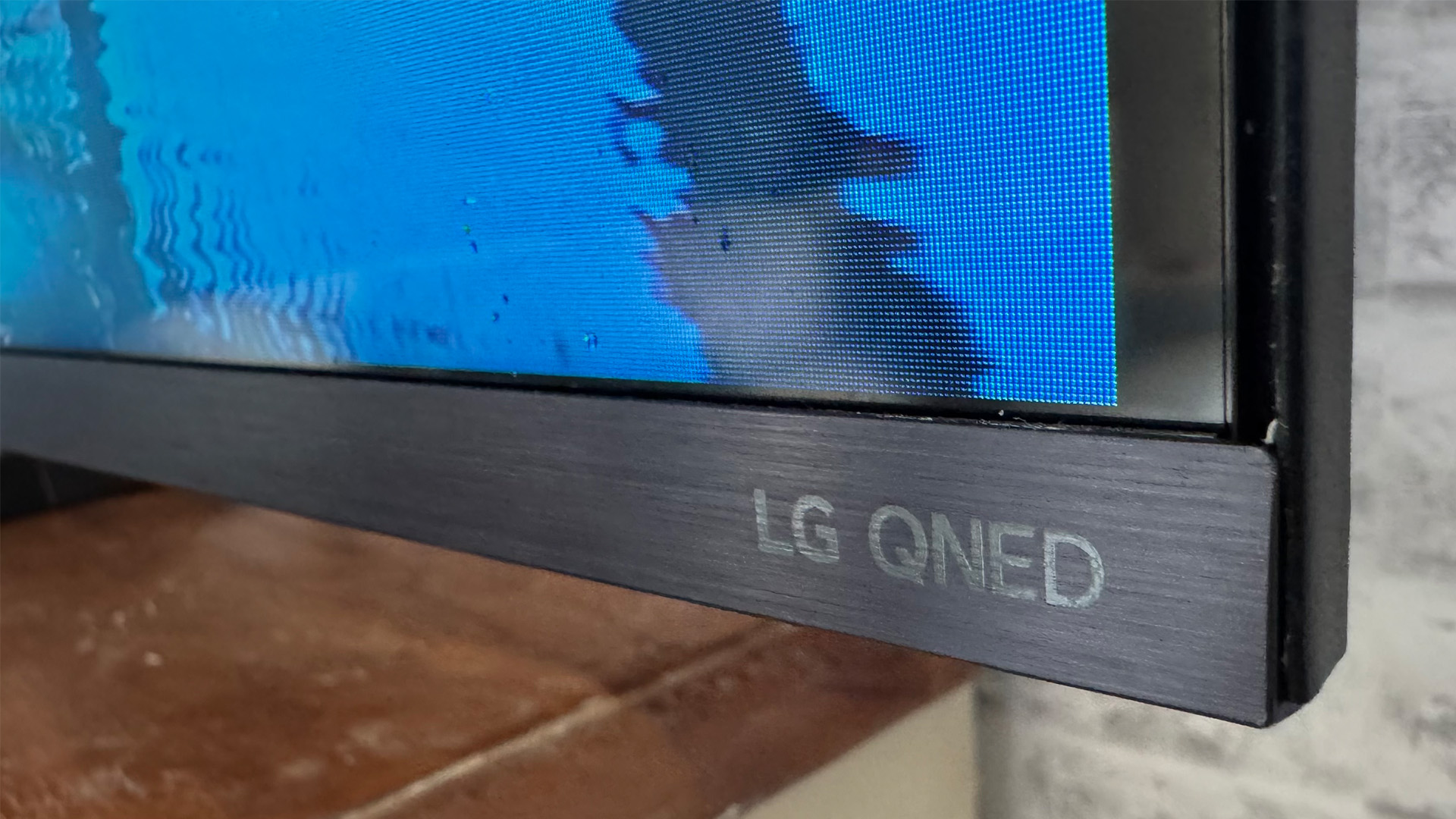
The 65QNED93 / 65QNED92’s £1699 / $1700 / AU$2470 pricing makes it LG’s second most premium 65-inch LCD TV for 2025, only beaten to the top spot by the 65QNED9M, which adds a wireless 4K/144Hz video transmission system to proceedings.
The latest hi-fi, home cinema and tech news, reviews, buying advice and deals, direct to your inbox.
It earns its premium status by virtue, chiefly, of its use of Mini LED lighting, premium Dynamic QNED colour technology, and a larger number of local dimming zones than any of LG’s more affordable LCD TVs for 2025.
The 65QNED93 is not cheap by any stretch of the imagination – though Samsung and Sony’s top-end 65-inch 4K Mini LED TVs, the QN90F and Bravia 9 respectively, cost significantly more. As does LG’s own 65-inch C5 OLED TV.
The 65QNED93’s closest rivals are really the Sony Bravia 7 and TCL C855K. Both of which are excellent TVs – though the TCL is in the process of being replaced by a new C8 series, so if you want one of those, you should probably be quick about it.
Design
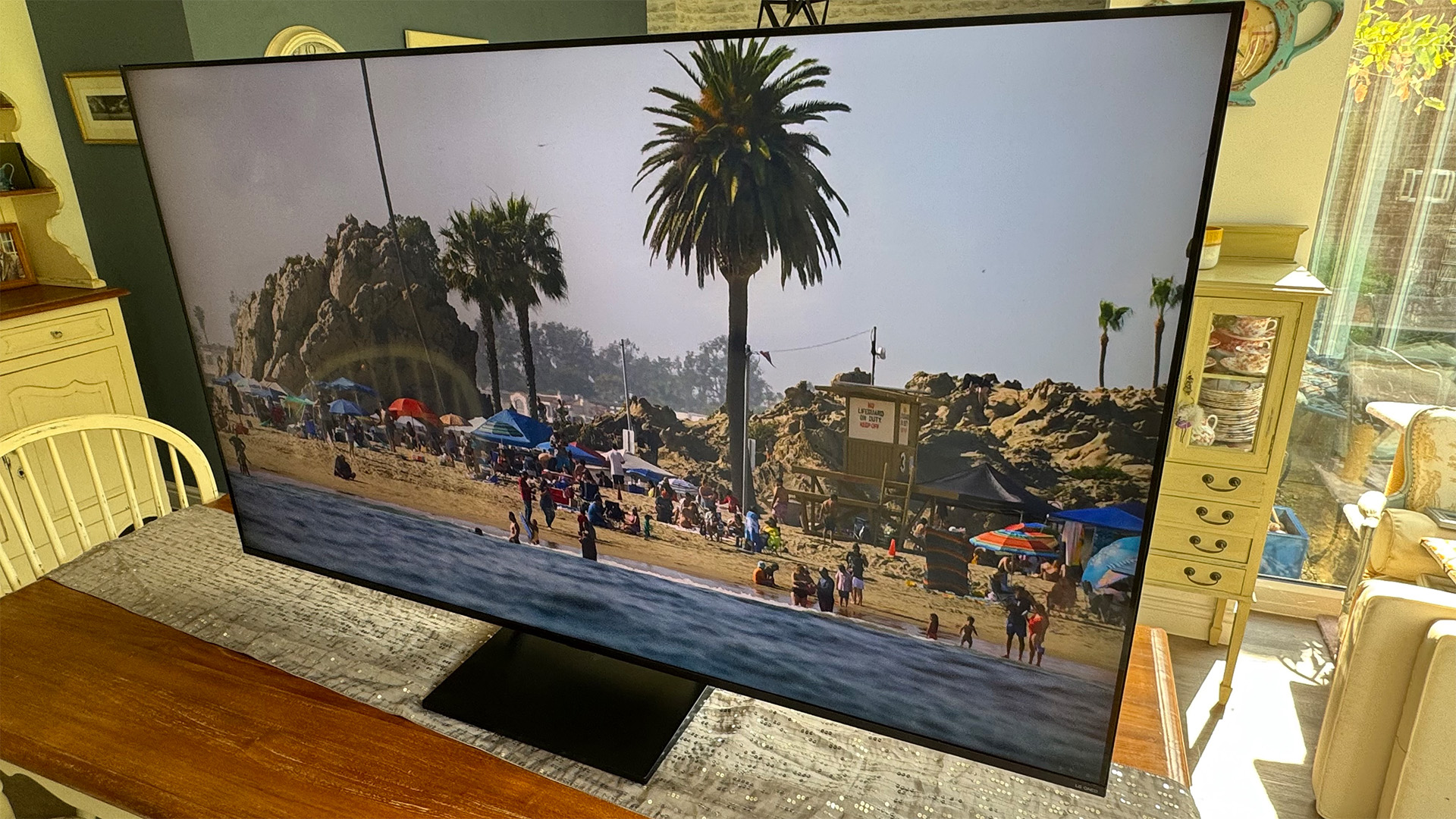
In the UK, the QNED93 is supported on an unusual centrally mounted rectangular base plate, which is attached using two slender neck supports.
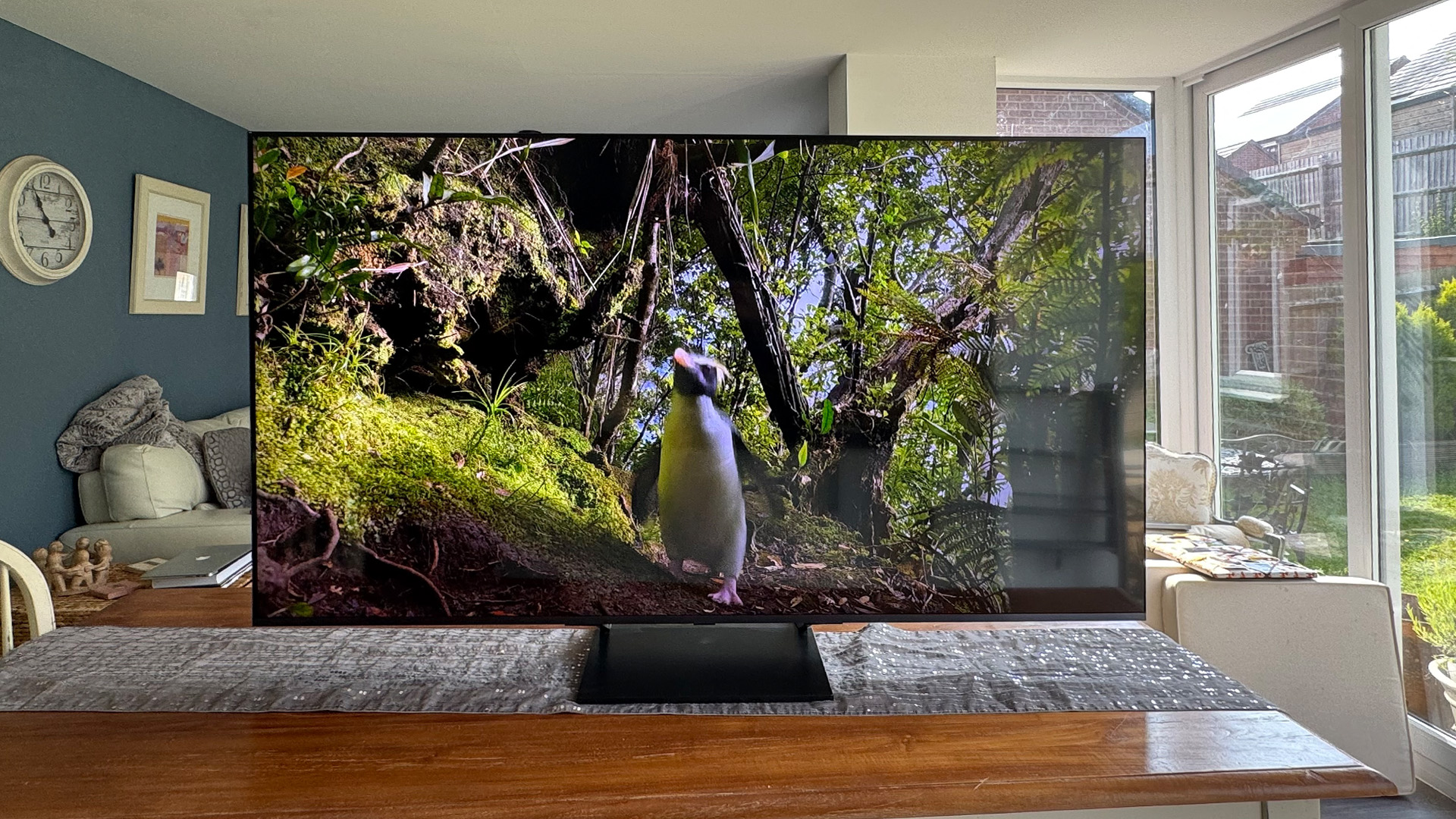
Screen size 65 inches (also available in 55, 75 and 85 inches)
Type Quantum Dot LCD (VA-type on 65-inch model only)
Backlight Mini LED (486 dimming zones)
Resolution 4K
HDR formats HLG, HDR10, Dolby Vision
Operating system webOS 25
HDMI inputs x 4 (all 48Gbps HDMI 2.1)
Gaming features 4K/144Hz, 4K/120Hz, VRR, ALLM, Dolby Vision game mode, HGiG
Input lag 9.6ms at 60Hz
ARC/eARC eARC
Optical output? Yes
Dimensions (hwd, without stand) 83 x 145 x 5.9cm
The resulting open-backed look to the stand, together with a pretty skimpy frame around three of its sides, helps you focus on the TV’s pictures – once you’ve stopped worrying about whether so small a stand can safely support so much screen (it can).
In the US, the QNED92 ships with a pair of more traditional (and less attractive) desktop feet instead of the base plate, hence the slight model number difference.
This isn’t the slimmest TV around, but the rear panel is at least flat across most of its surface area, making it a reasonably tidy wall-hanging option if you want to take advantage of its VESA standard attachment points.
The unusual textured silvery finish of the outer sides introduces a nice premium build-quality touch to proceedings, too.
Features
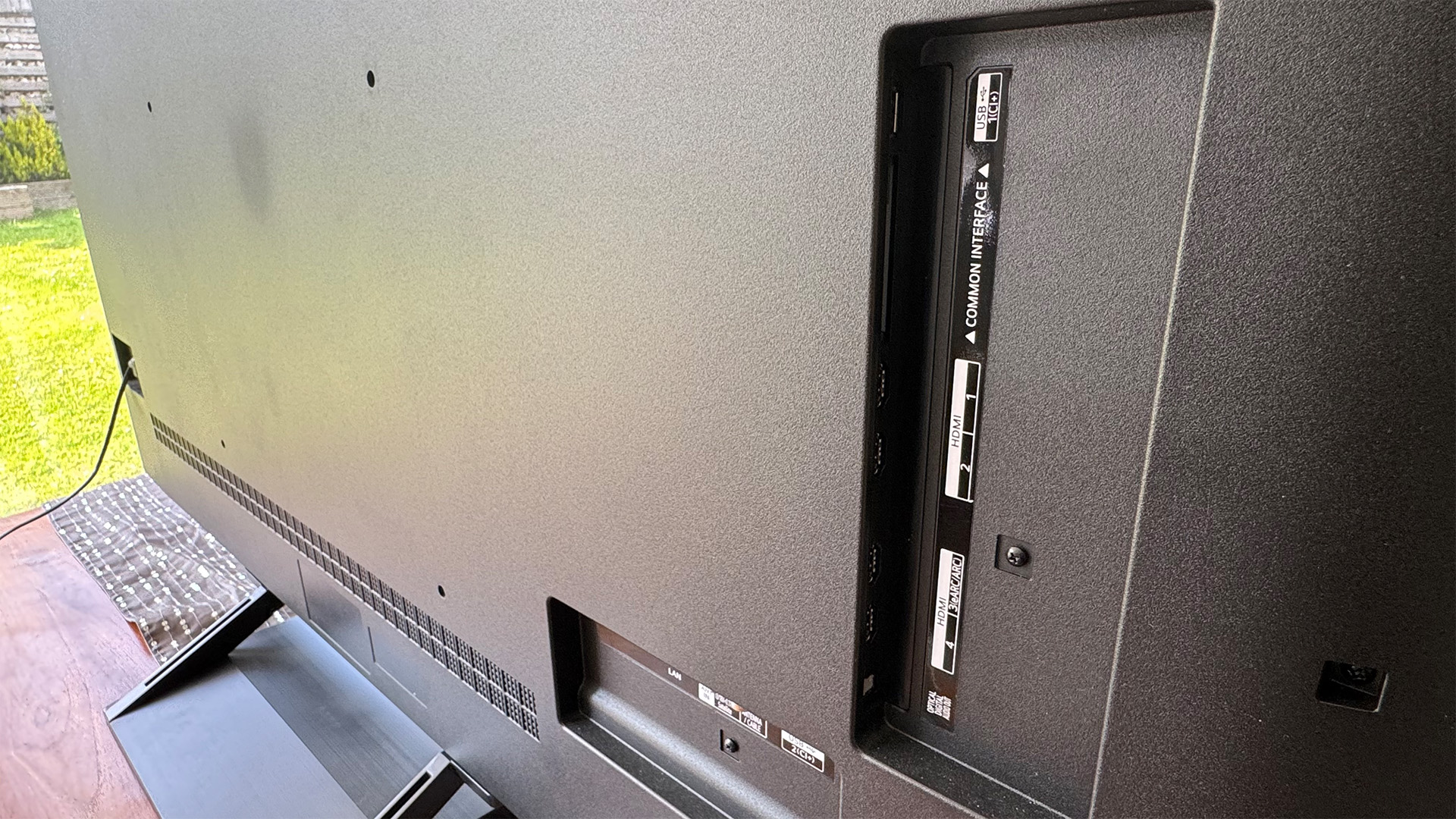
The VA panel found inside specifically the 65-inch QNED93 is arguably its single most important feature, given how it sets this screen size apart from LG’s usual IPS approach.
LG has backed this up this year, though, with not just Mini LED lighting but also a very promising 486 separate local dimming zones, in a 27x18 configuration. This is a really significant increase on the dimming zone count of its predecessor.
The QNED93 intriguingly switches its colour system from the proprietary LG Nanocell technology used on QNED models for generations now to a Dynamic QNED Pro Colour system.
This apparently replaces the old Quantum Dot-based technology with new fluorescent elements and the ability to absorb more ‘stray’ colour, resulting in supposedly purer colour reproduction and coverage of more of the HDR DCI-P3 colour spectrum.
Of course, just having lots of dimming zones and a fancy new colour system isn’t everything; it’s what you do with such features that counts. Cue the 65QNED93’s new Gen 2 version of LG’s Alpha 8 AI processor, which claims to bring 70 per cent more AI horsepower to the table than its predecessor.
As its name suggests, as well as taking charge of everything from backlight control to colour reproduction, upscaling of non-4K sources and motion compensation, this processor’s AI component includes improved Dynamic tone mapping for HDR playback, an automatic genre selection system to help the TV apply the optimal look to different content types, an AI Picture Pro option and a wealth of AI-powered smart features.
These AI smart features include the ability to distinguish between different voices in your household so that the TV can automatically activate the right person’s profile on its webOS smart platform; an AI Search feature that can actually deliver search results tailored to the person who issued the TV with a voice search command; an AI Chatbot that lets you ask the TV for help fixing or improving things in much the same way you would normally have to speak to a customer service agent; AI Picture and Sound wizards; and a new AI Concierge system that proves a kind of introduction to the TV’s AI and voice features by generating customised keywords and recommendations based on your past searches and viewing history.
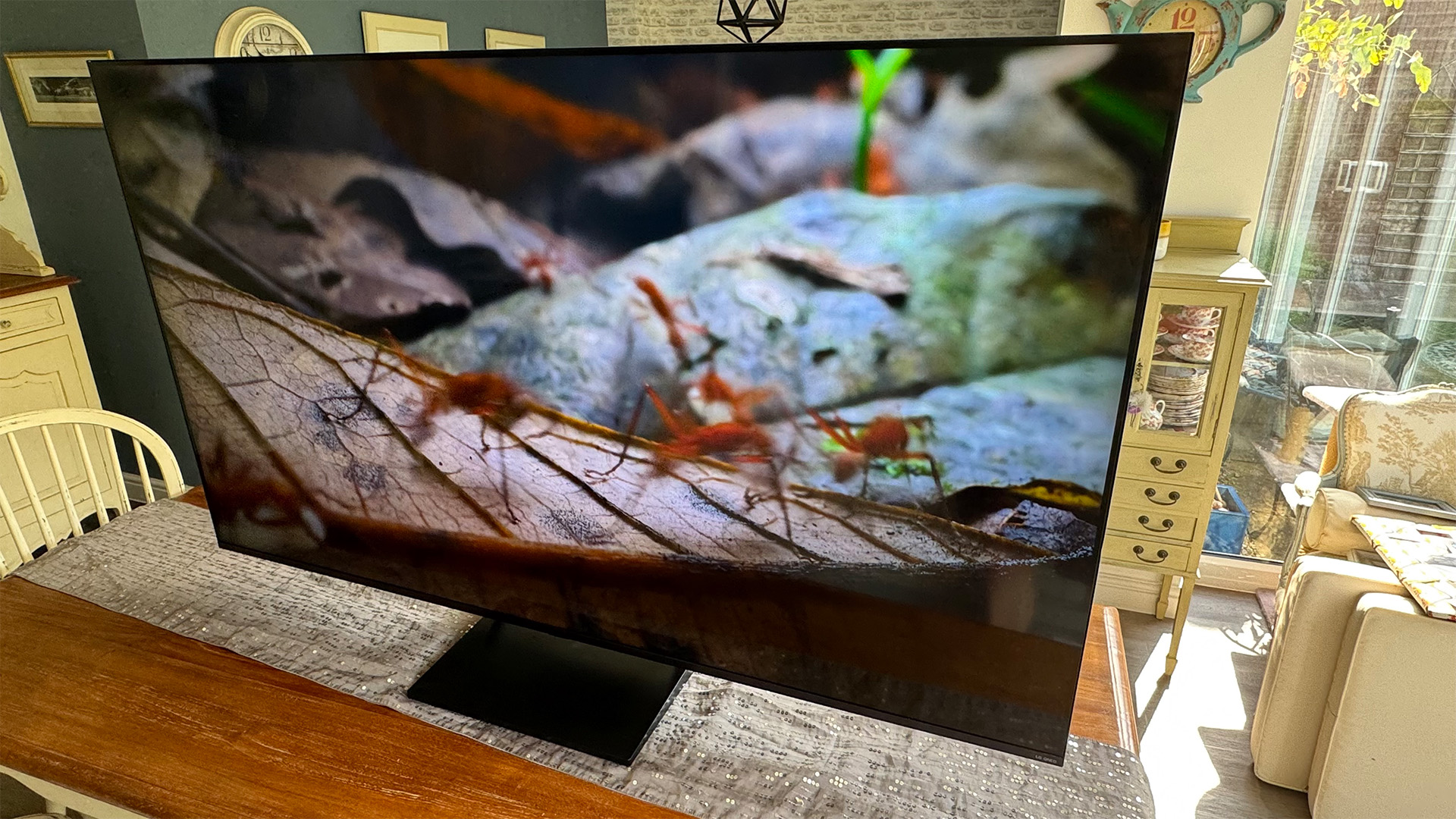
WebOS is starting to feel a little complicated unless you really engage with its voice and AI features, in fact, so this Concierge feature – which gets its own new button on the latest LG ‘Magic’ remote control – is worth exploring.
At the time of our initial review, the 65QNED93’s webOS system in the UK wasn't quite as content-rich as we’ve come to expect. That issue has thankfully now been rectified, and the BBC iPlayer, ITVX, All4 and My5 apps are all now on board.
It's a slight shame that those UK catch-up apps aren't wrapped up in the Freeview Play umbrella app, as they were in previous versions of webOS, but the most important thing is of course that they are there.
As usual with LG TVs, the 65QNED93 supports the HDR10, HLG and Dolby Vision high dynamic range formats, but not the HDR10+ system developed as an ‘open source’ alternative to Dolby Vision. LG’s choice does cover the most common three HDR platforms, but there are rival TV brands, including TCL, Hisense, Panasonic and Philips, that support all four HDR formats.
The 65QNED93 provides excellent gaming support. It can support 4K/120Hz gaming, for instance, across all four of its HDMI ports.
In fact, it can run all the way up to 144Hz if you have a PC capable of going there, with VRR (including the AMD FreeSync Premium standard) available up to that 144Hz top rate.
The TV can automatically switch to its fast-response Game mode, too, thanks to support for ALLM, and there’s a Dolby Vision game mode to ensure you don’t have to put up with excessive lag with game sources that support Dolby’s premium HDR format.
In its Game mode, the time the screen takes to render game graphics at 60Hz drops to an extremely speedy 9.6ms.
Picture
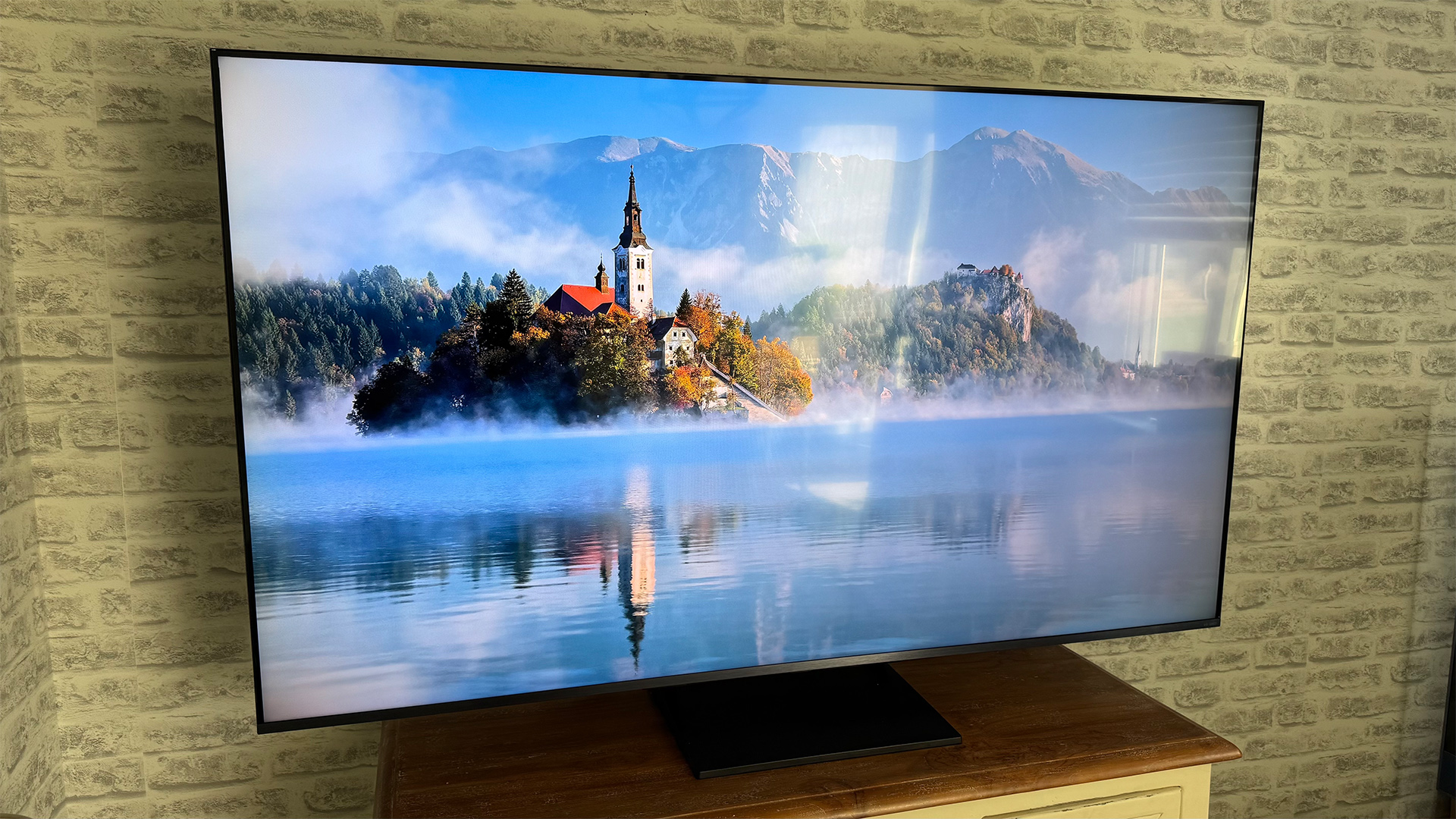
Compared with previous LG LCD TVs, the 65QNED93’s picture quality is nothing short of a revelation. Particularly when it comes to its ability to handle those dark scenes, even in HDR, that play such a big part in so many of our favourite film and TV test sequences.
For starters, dark scenes contain blacks that actually look black. Not grey, not green, not blue, but genuinely black. This instantly gives dark scenes a credibility and naturalism that we’ve never seen from an LG LCD TV before. In fact, the 65QNED93 can portray blacks as convincingly as really any of its rivals in the upper mid-range LCD TV world.
Despite this, in most picture presets, LG’s screen holds on to just the right amount of shadow detail, ensuring dark scenes contain as much depth and detail as bright ones, while also not bringing out more picture information in dark areas than you’re supposed to see.
The 65QNED93 does blacks so well, too, without typically generating significant blooming side effects. So bright highlights of dark shots, even in HDR, don’t typically appear with large or bold areas of backlight clouding around them.
All of this would have been unthinkable on any previous LG LCD TV we’ve seen; even last year’s QNED91, with its debut VA panel, suffered with sometimes-forced black levels that either lacked shadow detail or else exhibited high levels of blooming light pollution.
While the 65QNED93’s usually compelling handling of dark scenes is the initially most surprising good news about its performance, though, over time, the way it handles bright HDR content impresses at least as much.
Bright HDR scenes look nothing short of gorgeous, in fact, managing to combine impressively high levels of brightness for a TV at its price point with gorgeously rich and expansive but also remarkably natural-looking colours.
We’ve had the rare opportunity to see the 65QNED93 running alongside a number of other LCD TVs and even a professional Sony mastering monitor, and it gets closer to the mastering monitor during bright scenes than almost any other LCD TV we’ve tested.
Even in its default Standard preset, it delivers a combination of brightness, light control, colour toning, colour balance, and banding- and blocking-free tonal subtlety that feels as accurate and immersive as it is eye-catching.
The screen’s excellent light control enables it to deliver the lightest peaks of bright HDR clips with exceptional intensity too, while the apparent ease with which the 65QNED93 is able to deliver its many picture charms also means that bright scenes in the TV’s Filmmaker Mode look about as enjoyable as we’ve ever seen them look on an LCD TV.
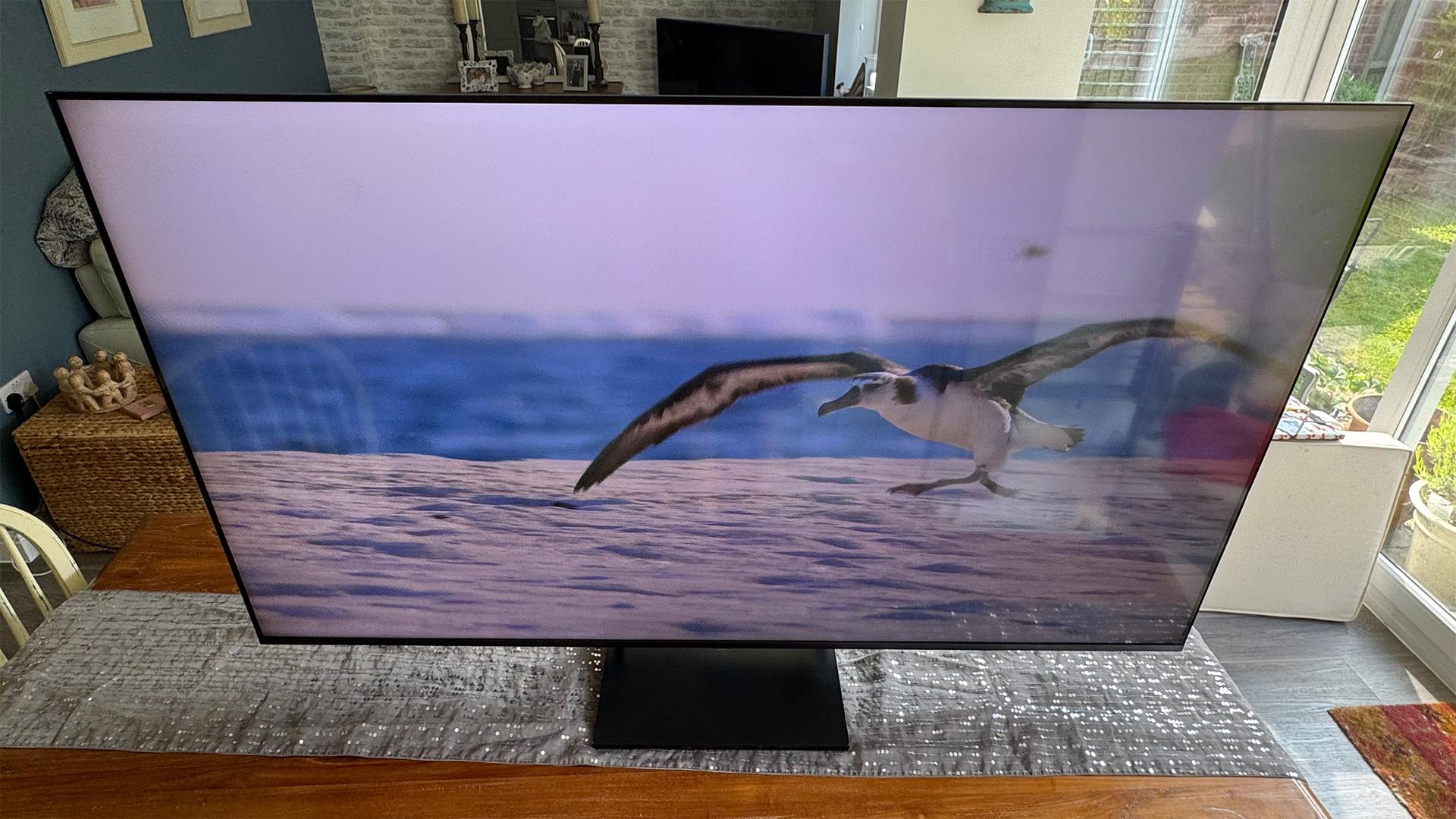
The 65QNED93’s colour finesse and fine light controls contribute to a very detailed-looking 4K picture too – and this detail holds up superbly during action scenes thanks to the TV’s outstandingly natural Cinematic Movement motion processing option.
While there are moments – many of them – where the 65QNED93’s pictures attain five-star status, though, there are just enough niggles around to cost it a picture mark.
First, the Filmmaker Mode goes a little too dark at times, which can also cause some shadow details during the usually excellently presented dark scenes to get crushed out of the picture.
The usually excellent presentation of shadow detail in Standard mode can also suddenly take a slight hit with shots that contain unusually extreme levels of contrast.
There can be minor baseline brightness fluctuations during cuts between bright and dark shots, too, and the very brightest HDR highlights can look slightly clipped of subtle shading details.
Also, where a relatively dark object appears against a very bright HDR backdrop, the dark object can look a little too much like a silhouette at times, while the usually well-controlled blooming can suddenly slip into showing the occasional cloud during shots that contain really complex mixes of light and dark content.
And finally, while the image helpfully mostly avoids the ‘dirty screen effect’ with camera pans during bright shots (which was a major problem with 2024’s QNED91), there is still a faint narrow band of muddiness around the very outside edges of bright clips.
All of these relatively small niggles tend to crop up fairly irregularly, though, making them far from constant concerns. So, for the vast majority of our time with the 65QNED93, we found ourselves marvelling at how good it is and drooling at the prospect of what LG might be able to do with its LCD technology going forward.
Sound
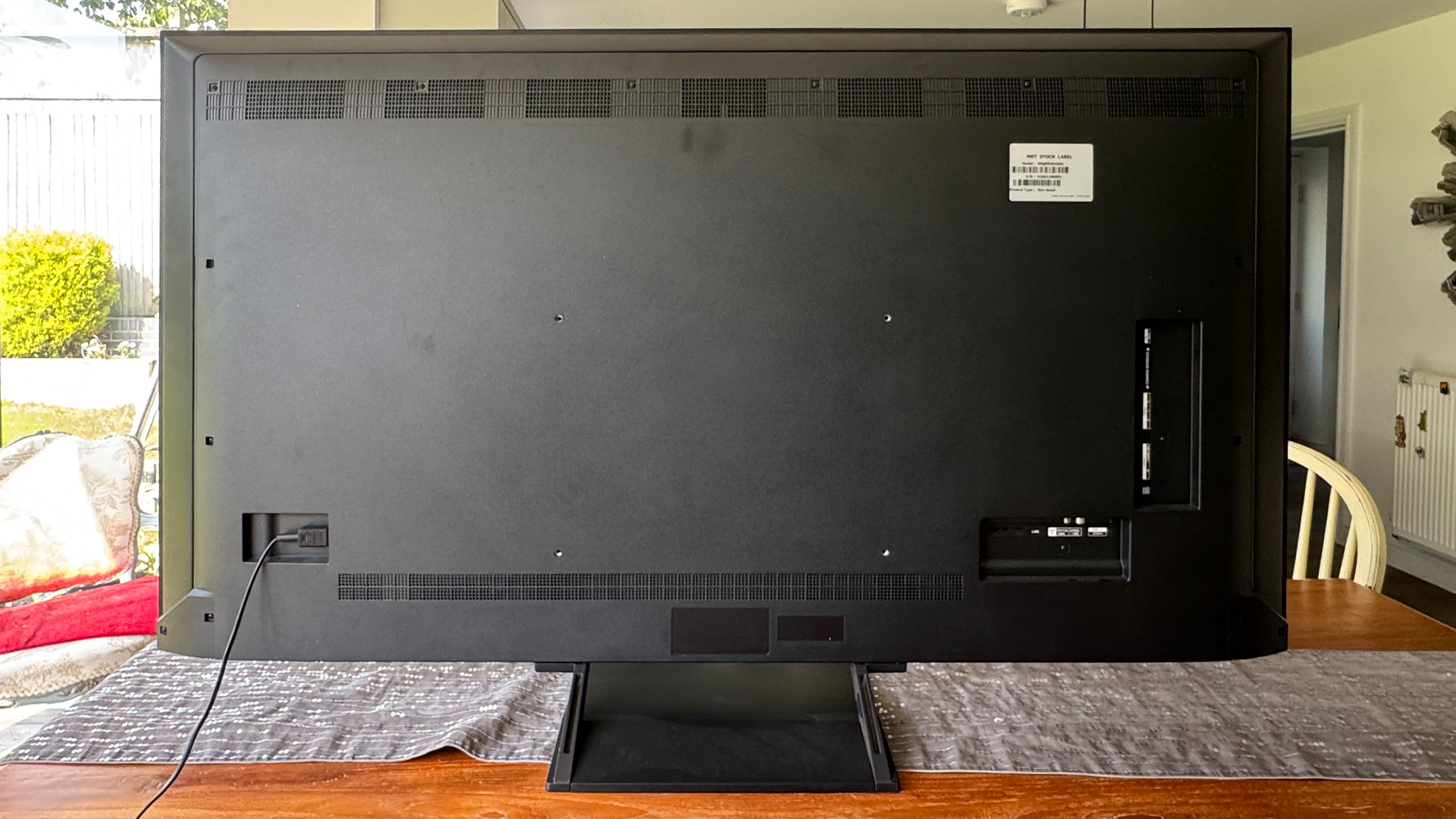
The 65QNED93 talks a pretty good talk on the sound quality front.
Its features, for instance, include LG’s WOW Orchestra system for combining the TV’s speakers with those in a compatible LG soundbar, as well as support for LG’s WOW interface, where the TV’s remote and menus can control a connected LG soundbar.
An AI Sound Pro system is on hand to increase the size and power of the TV’s soundstage by upgrading incoming sound – even if it’s only stereo – to a virtual 9.1.2-channel system.
This AI Sound Pro mode generally produces the most all-round satisfying sound, adding more volume, impact and bass potency, as well as projecting the sound further from the TV’s body to get more benefit from the TV’s built-in Dolby Atmos decoding.
Unfortunately, though, even the AI Sound Pro setting causes the 65QNED93’s speakers to break down into pernicious amounts of buzzing, crackling and humming interference when pushed. These are issues that also affect the TV’s default Dolby Atmos mode, despite this mode having far less volume, projection or bass presence at its disposal.
As with some of the brand’s OLED TVs over the years, the 65QNED93’s sound leaves us feeling that the basic audio hardware LG is using in this TV just can't do its ambitious processing proud.
Verdict
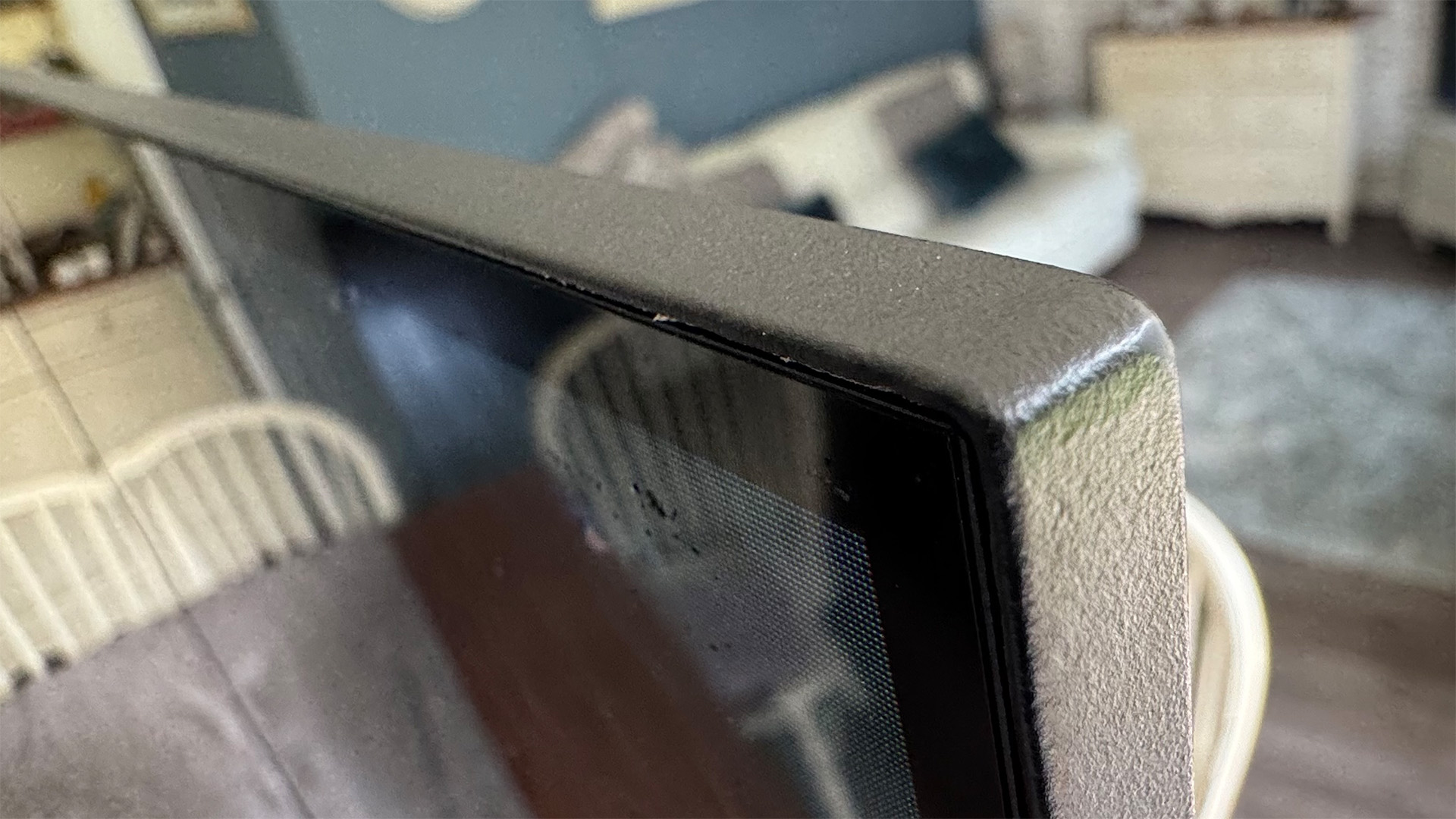
While this may only be true of a single model across LG’s latest LCD TV range, the 65QNED93 proves emphatically that LG is capable of making a splash at the serious end of the LCD TV world. There are times, in fact, when its pictures look nothing short of majestic.
A collection of relatively small picture niggles and inconsistencies, together with a flawed sound system, ultimately prevents us from being able to give the LG 65QNED93 an unbridled recommendation. Particularly if you can add a soundbar, though, for much of the time it really is nothing less than a joy to watch.
SCORES
- Picture 4
- Sound 3
- Features 5
MORE:
Read our review of the Sony Bravia 7
Also consider the TCL 65C855K
Read our Hisense 65U8N review
Best TVs: flagship OLEDs and budget LED sets tried and tested
John Archer has written about TVs, projectors and other AV gear for, terrifyingly, nearly 30 years. Having started out with a brief but fun stint at Amiga Action magazine and then another brief, rather less fun stint working for Hansard in the Houses Of Parliament, he finally got into writing about AV kit properly at What Video and Home Cinema Choice magazines, eventually becoming Deputy Editor at the latter, before going freelance. As a freelancer John has covered AV technology for just about every tech magazine and website going, including Forbes, T3, TechRadar and Trusted Reviews. When not testing AV gear, John can usually be found gaming far more than is healthy for a middle-aged man, or at the gym trying and failing to make up for the amount of time he spends staring at screens.
You must confirm your public display name before commenting
Please logout and then login again, you will then be prompted to enter your display name.
